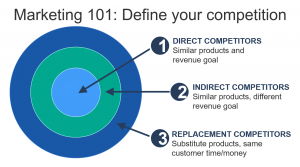Value Proposition: Before you express the value, you have to deeply understand the value (MarketingSherpa Podcast Episode #3)
You think your product is great. Your service is top-notch. And personally, I have no reason to doubt you.
Your ideal customer, on the other hand … let’s face it, they don’t live in the four walls of your office. They aren’t thinking about your product every moment of every day like you are. They — and I hope this doesn’t sound harsh — really don’t care.
This disconnect is normal, of course. But here’s where you’ll get in trouble.
The next time you hire an advertising agency to create a campaign, when you redesign your website, when you launch a product — if you use that same insider thinking, you will undercut your marketing investments. Because those advertising and marketing creatives need to be armed with an essential reason why the ideal customer should buy your product.
Without that core reason — that marketing creativity isn’t being put to its most effective use. Just like a painting without a viewpoint isn’t really art, it’s just nice colors on a canvas.
Without that core reason, all you get is “we’re the bestest, greatest, amazingest [product type] you’ve ever seen.” You can buy all the media you want and blast that message out into the world but really … c’mon … how many customers will truly believe it?
Your product needs a value proposition. In our latest podcast, Austin McCraw and I have a robust yet light-hearted conversation about pitfalls marketers can get into when crafting their value prop. You can listen to this episode below in whichever way is most convenient for you or click the orange “Subscribe” button to get every episode.
Listen to the podcast audio: Episode 3 (Right mouse click to download)
More about episode #3 — consider the competition
A value proposition created in a vacuum is no value proposition at all.
And this is what makes crafting a value prop so difficult. You’ve got to take a good, hard look at what other options your customers have. Even when it isn’t direct competition. For example, customers taking a short trip aren’t only considering which airline is best, they are considering if they should drive instead. Or take a train. Or perhaps not go at all.











